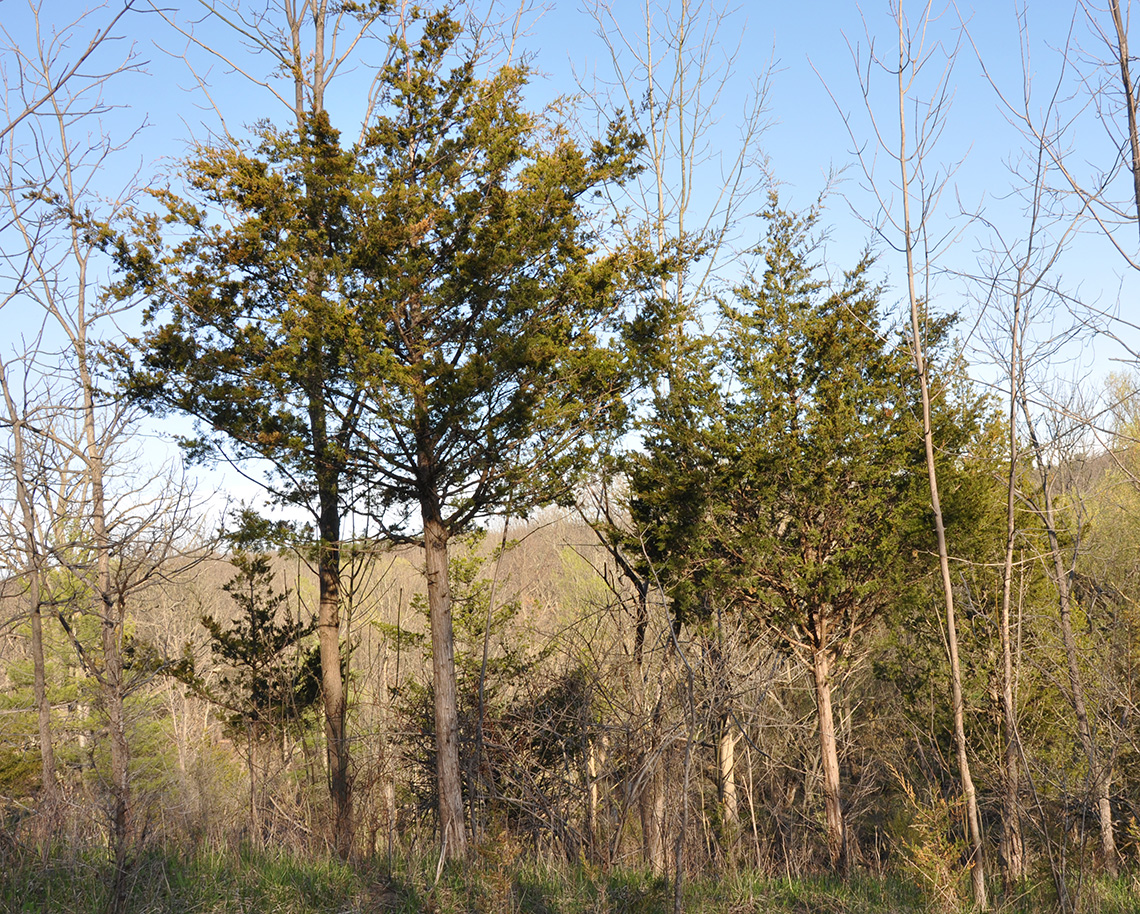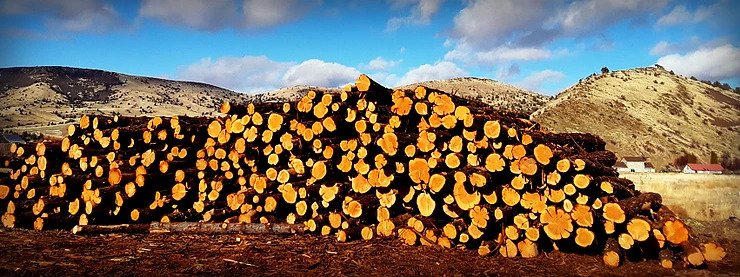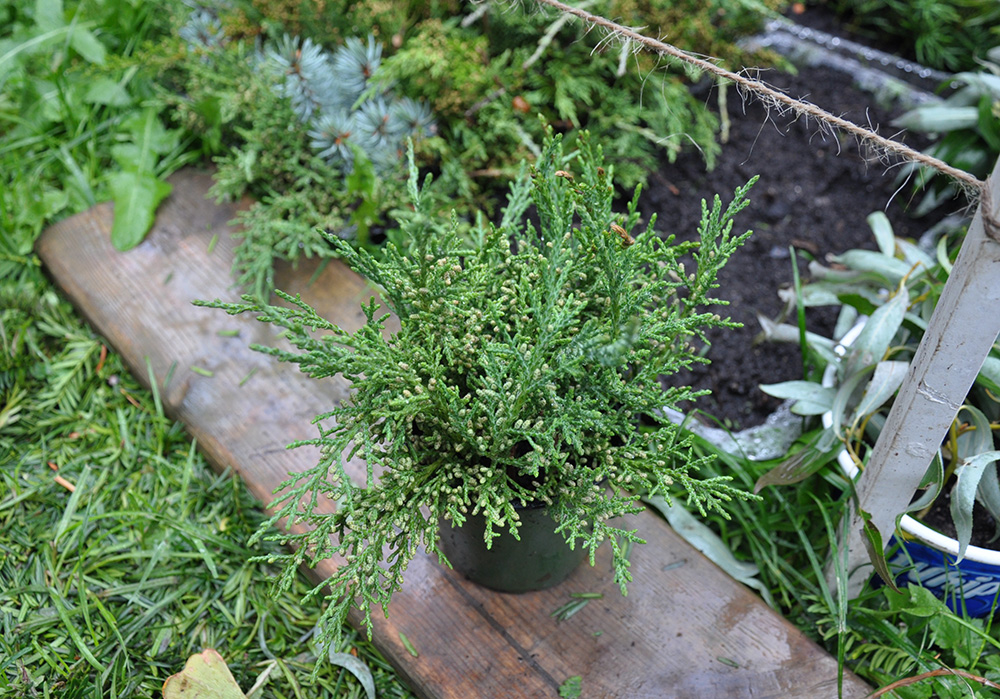The Usefulness of the Eastern Red Cedar

The Eastern Red Cedar (Juniperus virginiana) is a small, shrubby, rugged-looking tree that grows in north/east America. It can often be seen in farmers’ fields, forest edges, and fenced road sides. Juniperus Virginiana is actually a Juniper and some botanists do not separate J. Virginiana from Silicicola (Caine, S).
It wouldn’t be surprising if you’ve seen many of these timid trees scattered along field edges when driving on the road, yet thought nothing of them. I’ve often wondered about the presence of these mysterious junipers and whether or not they’re native or introduced. Looking into it more closely, I realized they’ve been here in southern Ontario for thousands of years and have much to offer in terms of economic, biological, and artistic value.
Lumber Material
Since the trees rarely reach over 40 feet tall, Eastern Red Cedar Wood, would not normally be suitable for use on large structures. However, Its red color and fragrance make it ideal for the construction of drawer linings and fine furniture.
Its warm tones, alluring scent, and unique shapes and textures lend itself well to rustic furniture designs and attractive features in finer grade lumber. In addition to exterior landscape and decking products, builders are also sourcing for new uses like interior cabinetry and paneling, countertops, and flooring. Eisenberg, KC (2018).
Historically, early settlers have made a living selling the tolerant, long-lasting wood for wine barrel creation. ”Following the Civil War, many impoverished landowners along tributaries of the Mississippi River became re-established financially by floating cedar logs into staves and headings to be shipped to French wineries.”(Hemmerly, 1970). Barrels used for aging Gin also often use Juniper wood to create an enhanced long refreshing taste.
Today, it seems like the market for these trees are growing, as companies find new sustainable techniques to harvest and make use of the lumber. The trend has especially taken off in the west. Jenkins (2004) states; ”The analysis estimated that the U.S. eastern red cedar market generates almost $60 million annually in gross sales and is growing, Gold said. Almost 40 percent of survey respondents indicated that demand for red cedar products had increased in the past 5 years, and about half felt it would continue increasing over the next 5 years.”

The unique, wavy colour patterns add character like no other wood. A look at the Sustainable Northwest website http://www.snwwood.com/Blog/Juniper , has pushed its limit, creating beautiful decks, garden beds, and retaining walls from harvested Juniper lumber. I’m excited about finding out what other interesting projects others used it for. The great thing is that it’s easy to find for eastern Canadian/Americans and (depending on where you live) possibly free!
Health Benefits
Different parts of the tree have been used in various culinary concoctions long before settlers came. Joe@EatThePlanet (2013) states; “Native Americans often added juniper berries to food dishes and grains like flour for a hint of flavor. Deer and other meat was often cooked with Juniper berries. They were prepared different ways by different tribes but some of the preparation methods include drying, soaking, mashing, or just eating them raw.” It’s nice to know that if you were ever stranded in the woods and needed to hunt game, you could have a way and means of seasoning your meat!
I was surprised to find out about the detoxifying abilities these Junipers have Medicinally. Uses range from common flu treatment to fighting parasites and stomach issues. Joe@EatThePlanet (2013) goes on to say; "The berries of Eastern Red Cedar have a number of medicinal uses. A Tea made from the berries has been commonly used for the treatment of coughs and colds, and to expel intestinal worms". There are, however, some Juniper species that have poisonous berries which can be confused with Juniperus Virginiana. So if you plan on using it for ingestion, just make sure that it’s thoroughly identified first!
Cedar/Juniper Oil is also commonly used for health and wellness applications. “The bark of the Red Cedar is used to make many different fragrances, such as essential oils.” (Lakeforest College Environmental Studies). I have a bottle of this oil that has been sitting in my bathroom cabinet for years. The oil never perishes and it reminds me of the smell of Christmas. It also makes a great vapo-rub for sore throat and muscles.
Bonsai Production
The initial reason I grew an interest in Juniperus Virginiana was for potential Bonsai material. Fine scaled branches and its general “smallness” was a winning feature for me when passing by it for the first time.
There are many good examples already on the web using Eastern Red Cedar including the bonsai styles: Cascade, Informal Upright, Literati, Shari and more. Caine, S. states; “With sufficient early training, the red cedar can be used for most styles, though multiple-trunk styles probably require planting multiple trees close together.” Junipers in general are currently one of the most easy trees to train as bonsai. Harrington(2017), mentions Juniper’s popularity in the bonsai world as it lends itself readily to jins and sharis (deadwood effect).
These Cuttings were taken in early fall (below). I also have a set from Early Summer that have resisted mold and rot in less than ideal conditions. Unfortunately the cuttings didn't take as easily as with other junipers. Months later, some survive, but I have yet to see roots.

Junipers are normally long-lived which usually makes them suitable and sustainable as bonsai. This tree is not incredibly age tolerant, but decent. According to the article, Juniperus Virginiana (Eastern Red Cedar) Cupressaceae (Lake Forest College); they have a lifespan of - 100 to 300 years.
So next time you take a walk by a forest edge, field, or wetland area, see if you can spot an Eastern Red Cedar. As long as you don’t feel weird about it, feel it’s leaves, smell it’s bark, look at the fruit and most of all see all of its potential! Tell your friends about what you know. There’s value in every tree and Juniperus Virginiana is certainly no exception.
References
Lake Forest College Environmental Studies. Retreived from https://www.lakeforest.edu/academics/programs/environmental/courses/es203/juniperus_virginiana.php
Jenkins, J., From trash to cash: UMCA explores profitable Eastern Red Cedar Market. Retreived from http://agebb.missouri.edu/agforest/archives/v8n2/gh6.htm
Hemmeryl, T. E., Economic Uses of Eastern Red Cedar. Retrieved from https://www.jstor.org/stable/4253106?seq=1#page_scan_tab_contents
Caine, S., Juniperus virginiana. Retrieved from https://www.bonsai-bci.com/index.php/by-common-name/evergreen-conifers/542-juniperus-virginiana
Joe@EatThePlanet (2013). Eastern Red Cedar Berries, A Touch of Natural Flavor. Retrieved from http://eattheplanet.org/eastern-red-cedar-a-touch-of-natural-flavor/
Harrington, H. (2017), Juniperus/ Juniper Bonsai Species Guide. Retrieved from http://www.bonsai4me.com/SpeciesGuide/Juniperus.htm
Eisenberg, KC (2018), Juniper road trip: Our autumn tour of juniper mills. Retrieved from http://www.snwwood.com/Blog/Juniper